Indian woman who was head of ‘all gays in New York’—Urvashi Vaid changed American activism
In 1990, US President George HW Bush made his maiden speech on AIDS, a decade into the healthcare crisis, at a conference by the National Leadership Coalition on AIDS. When she heard nothing but rhetoric, a 31-year-old woman stood up resolutely, holding a placard that read, “Talk is cheap, AIDS funding is not”. She was removed from the hall, but not before leaving a mark. Urvashi Vaid went on to be as ‘the most prolific LGBTQ organiser in history’; her peers describe her as a prophet of the LGBTQ movement.
“The gay rights movement is not a party. It is not a lifestyle. It is not a hairstyle. It is not a fad or a fringe or a sickness. It is not about sin or salvation. The gay rights movement is an integral part of the American promise of freedom,” she said at a protest march in 1993.
Vaid’s ideas and activism have led to rallying calls for change in American LGBTQ political activism across the ages.
‘She was the curve’
In 1992, Vaid was determined to make sure the South Asian Lesbian and Gay Association was part of the annual India Day Parade in New York City. She marched to the office of the organisers but was turned away. Vaid accused them of homophobia but they dismissed her claims and retorted that “an Indian woman is the head of all the gays of New York”. They didn’t know this Indian woman was standing right in front of them. Vaid was then the head of the National Gay and Lesbian Task Force, and the first woman of colour to hold the post.
Writing about the activist and lawyer in the New Yorker, journalist Masha Gressen called her “a legendary organizer in the L.G.B.T.Q. movement, who had an unerring sense of injustice and the overwhelming need to redress it”.
Born in India in 1958, Vaid emigrated to the US at the age of eight after her father, writer Krishna Baldev Vaid, took up a teaching position at the Potsdam State University in New York. Growing up, Vaid was fascinated by activists and would hang pictures of Martin Luther King Jr. on her bedroom walls.
“I always identified with the other outsiders…The people on the streets protesting the war and the people in the civil rights movement that I was reading about and watching on TV in the mid-1960s…I was 10 years old in 1968. And those were incredibly important images of these movements to me,” she said in an interview in 2013.
Vaid went on to attend her first anti-war rally at the age of 11. It was the start of a prolific career in activism. In 1983, when she was studying law at Northeastern University, she founded the Boston Lesbian/Gay Political Alliance.
After her graduation, she began working with the National Gay and Lesbian Task Force, the oldest national civil LGBTQ organisation in the US. In 1989, she rose to become the organisation’s executive director.
Her position as a highly visible Indian lesbian was an inspiration and comfort to many South Asian queer people. Activist Dipti Ghosh recalled how when she came out in the 1980s in Michigan, she didn’t know any other South Asian lesbians. That’s when her mother told her about the “Indian lesbian” on TV.
“She wasn’t ahead of the curve. She was the curve. She was the unstoppable force that made us bend,” remarked Cathy Renna, communication director for the National LGBTQ Task Force, in an article on Vaid post her death in 2022.
Intersectionality was central
Vaid frequently emphasised the interconnected nature of various societal issues.
She fought against any and all inequities rooted in racism and colonialism by spotlighting issues such as criminal justice, prison reform, disproportionate policing, healthcare access disparities, HIV/AIDS criminalisation, and broader HIV treatment availability
In a Facebook post after her death, activist J’aime Grant noted how even though the LGBTQ task force donors revolted when Vaid opposed the Gulf War, saying gays had nothing to do with the war, she stood her ground because “that is how much she believed in intersectionality”.
“I wanted to make explicit the limits of the LGBT movement and the assumptions that we operate the movement under—that everyone is white, everyone is middle class,” she said an interview. For Vaid, ‘equality was not enough’ and ‘the disproportionate criminalisation of people of colour’ had to be countered.
After years of activism along with navigating and leading LGBTQ organisations. Vaid in 2012, she launched LPAC, the first lesbian super PAC—a political action committee—aimed at bolstering lesbian visibility and representation in political spheres.
‘No Queer left behind’
Along with social and political battles, Vaid struggled with personal battles of her own. She faced cancer not once, but thrice: first thyroid in 2005, then breast cancer nearly a decade later, and finally metastases from the breast cancer. However, she did not let it deter her work—she made it into a community awareness campaign instead.
In her profile for The New Yorker, Gessen recalled how during her fight with cancer in 2005, 2015 and 2020 respectively, Vaid and her partner, political humorist Kate Clinton hosted community gatherings where they simplified medical information.
Vaid believed in the principle of “No Queer Left Behind” and for her the movement was not ‘over’ until the weakest among us had seen the benefits of freedom.”
Even the Supreme Court was not above being called out. To her, simply giving marriage rights was not enough. This was perhaps why she wanted specific clarion calls, even after she died on 14 May 2022.
Her funeral service opened with a raw call-and-response: “F**k cancer!” and ended with defiant echoes of “F**ck the Supreme Court!”
Original Story by DEBDUTTA CHAKRABORTY, The Print
May 14, 2024
